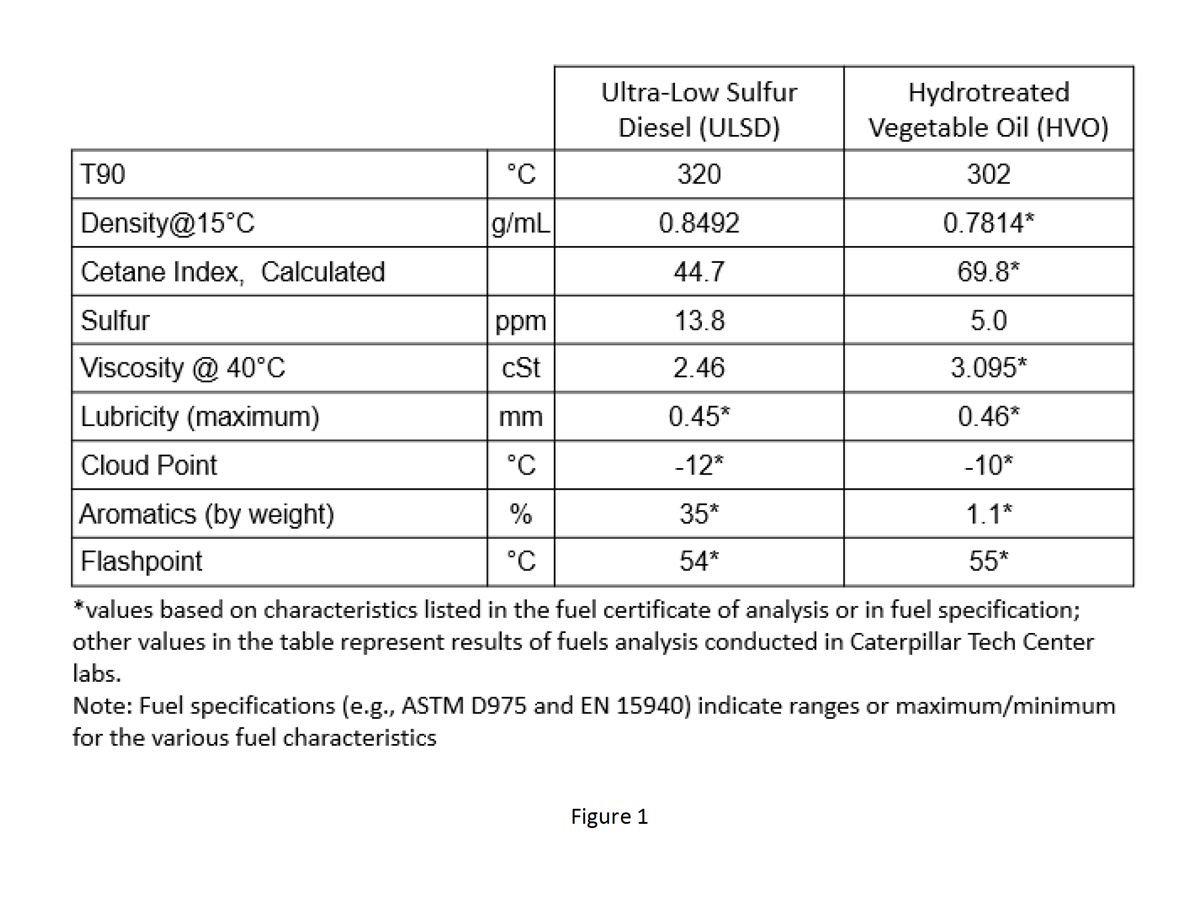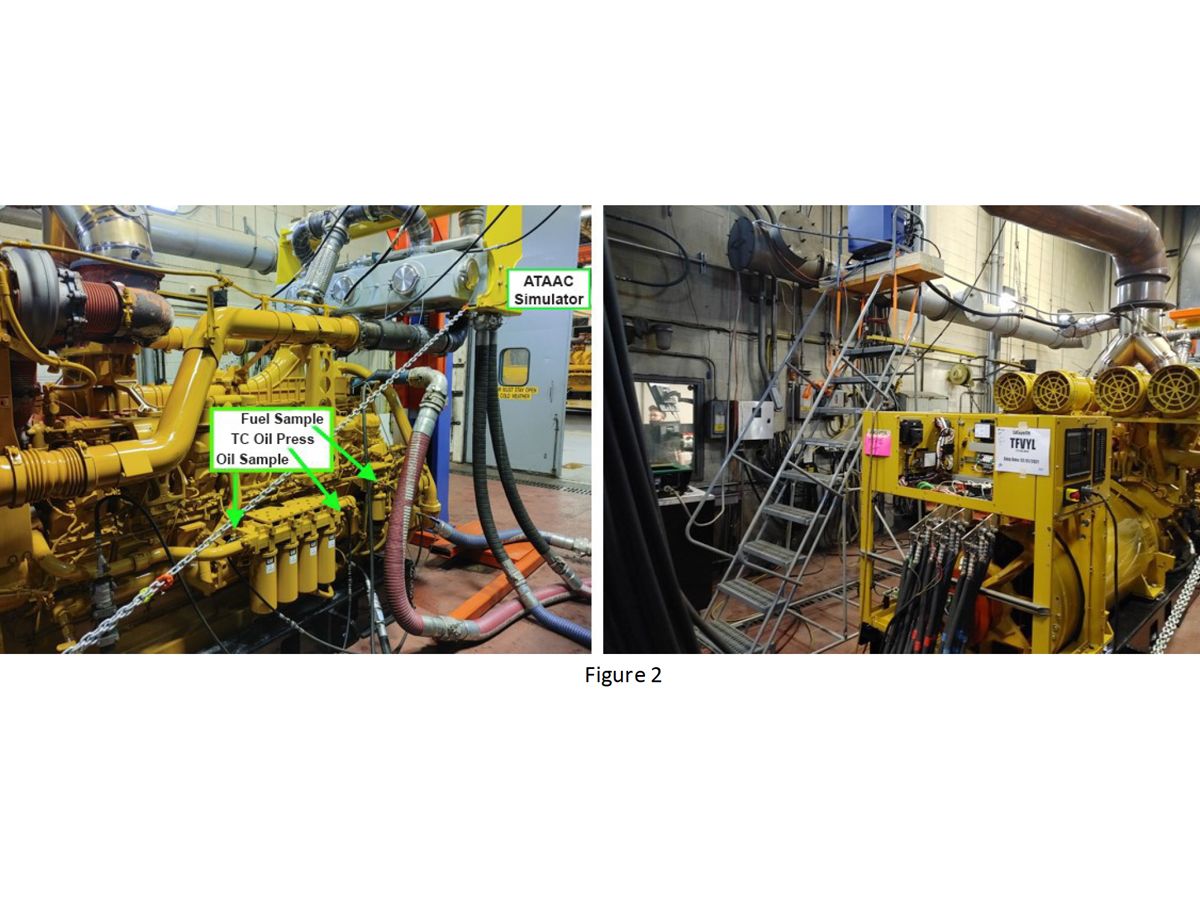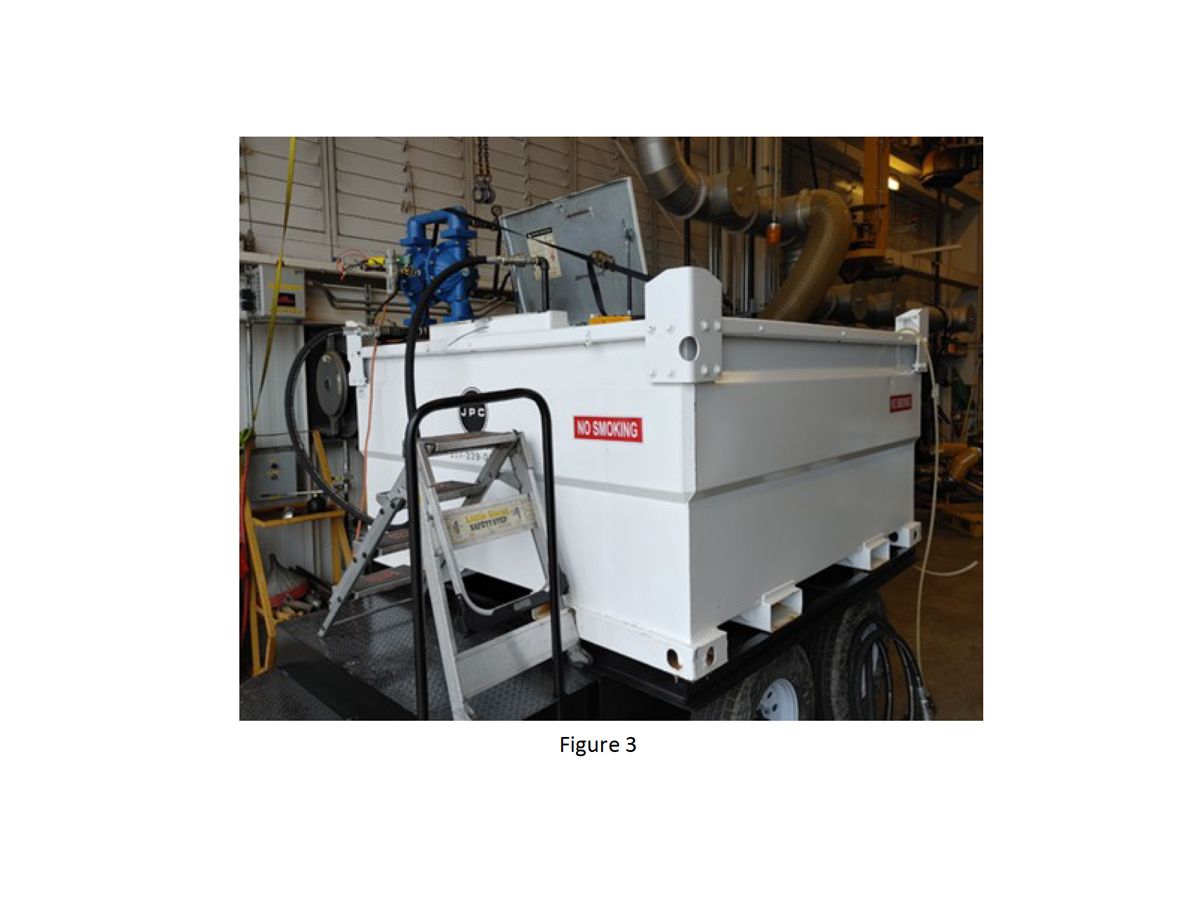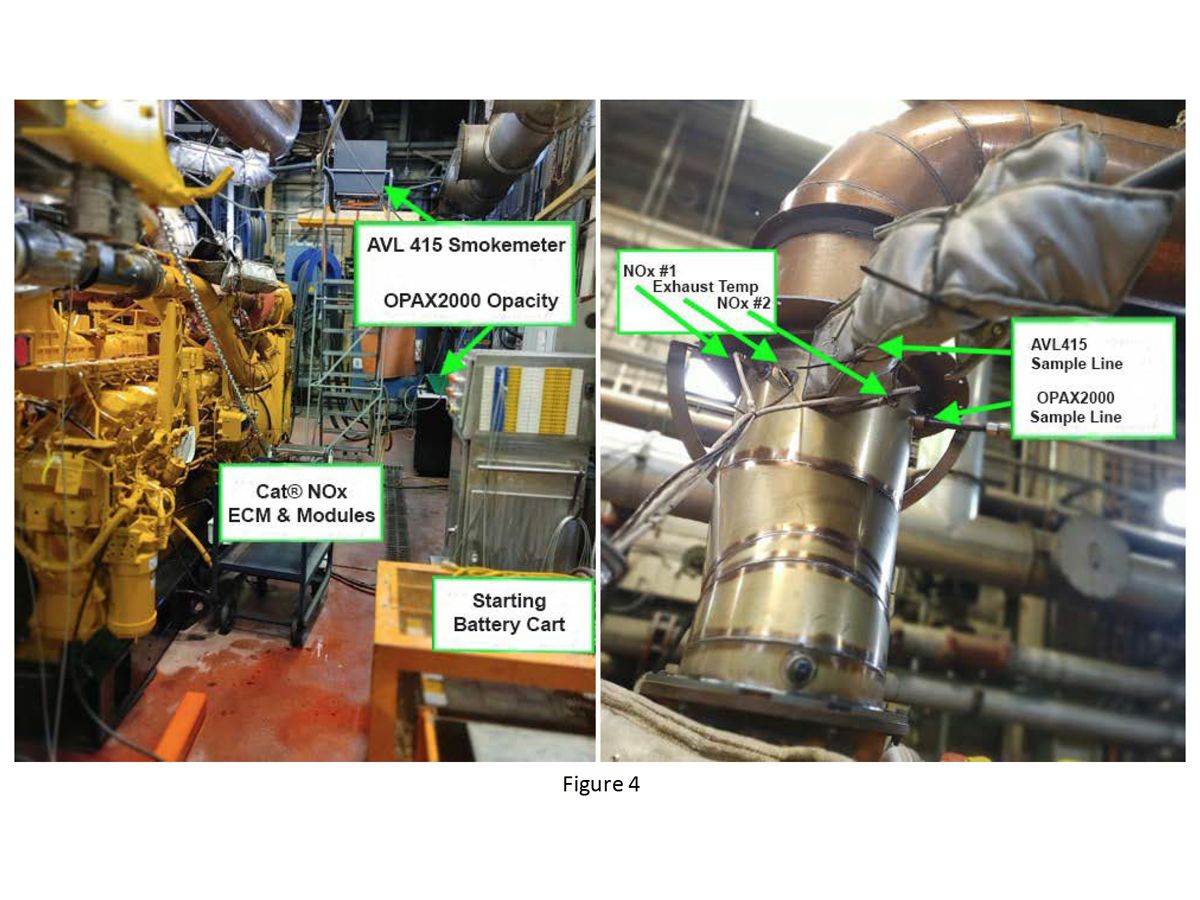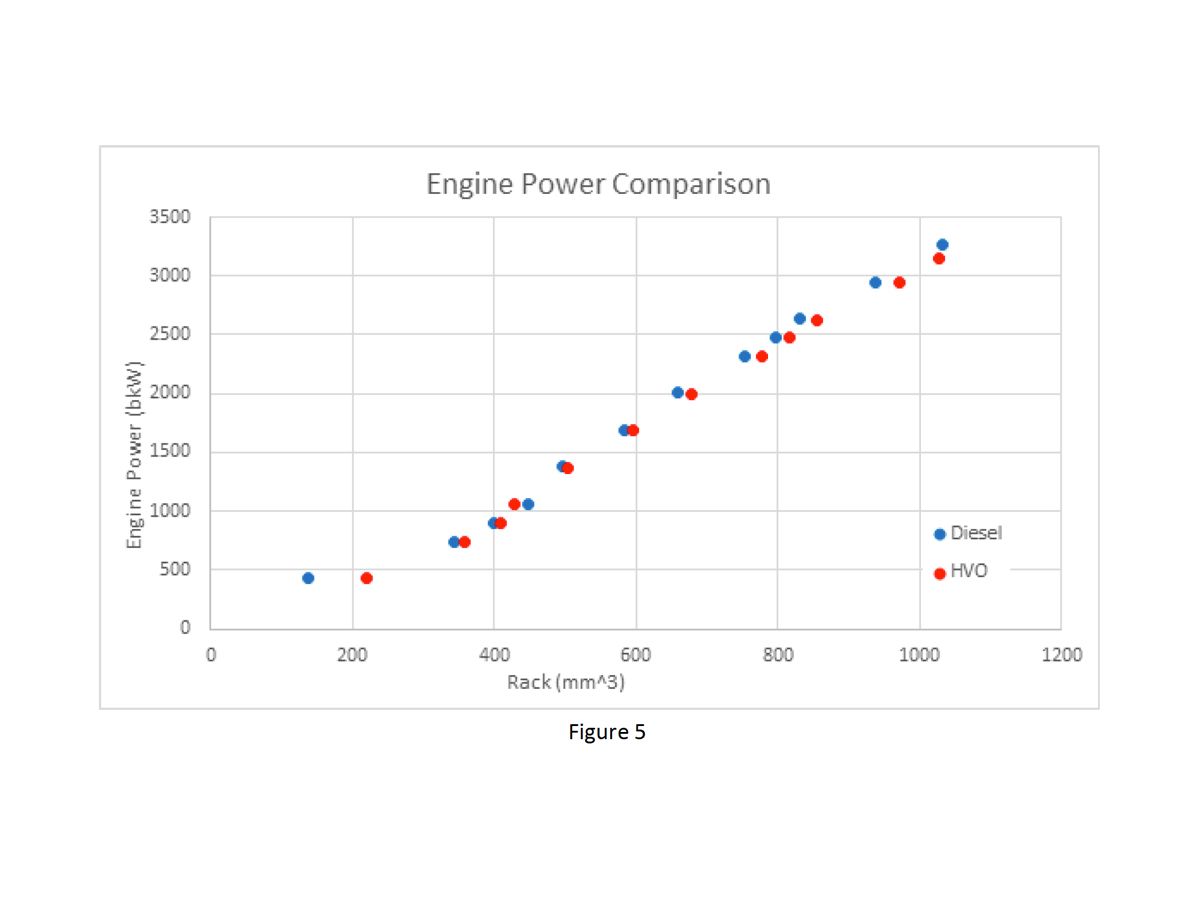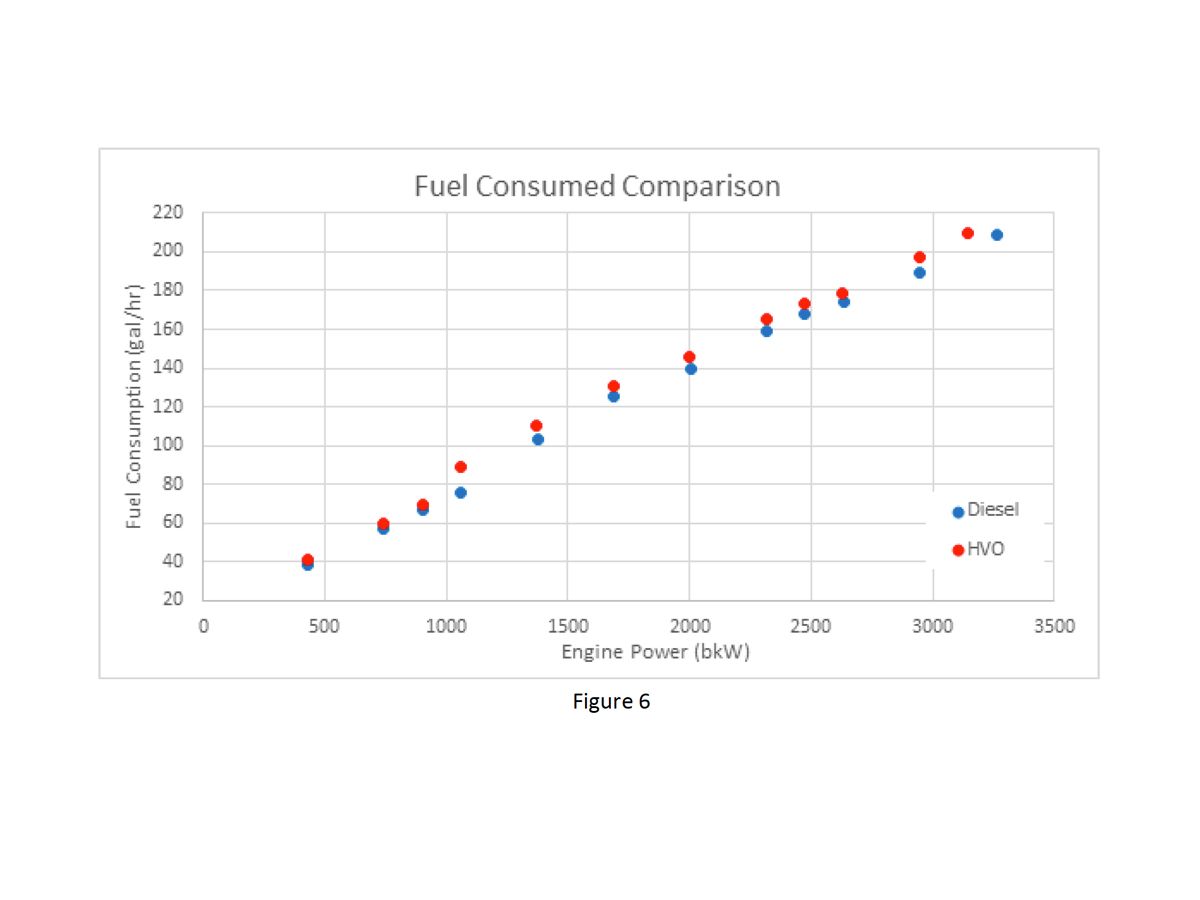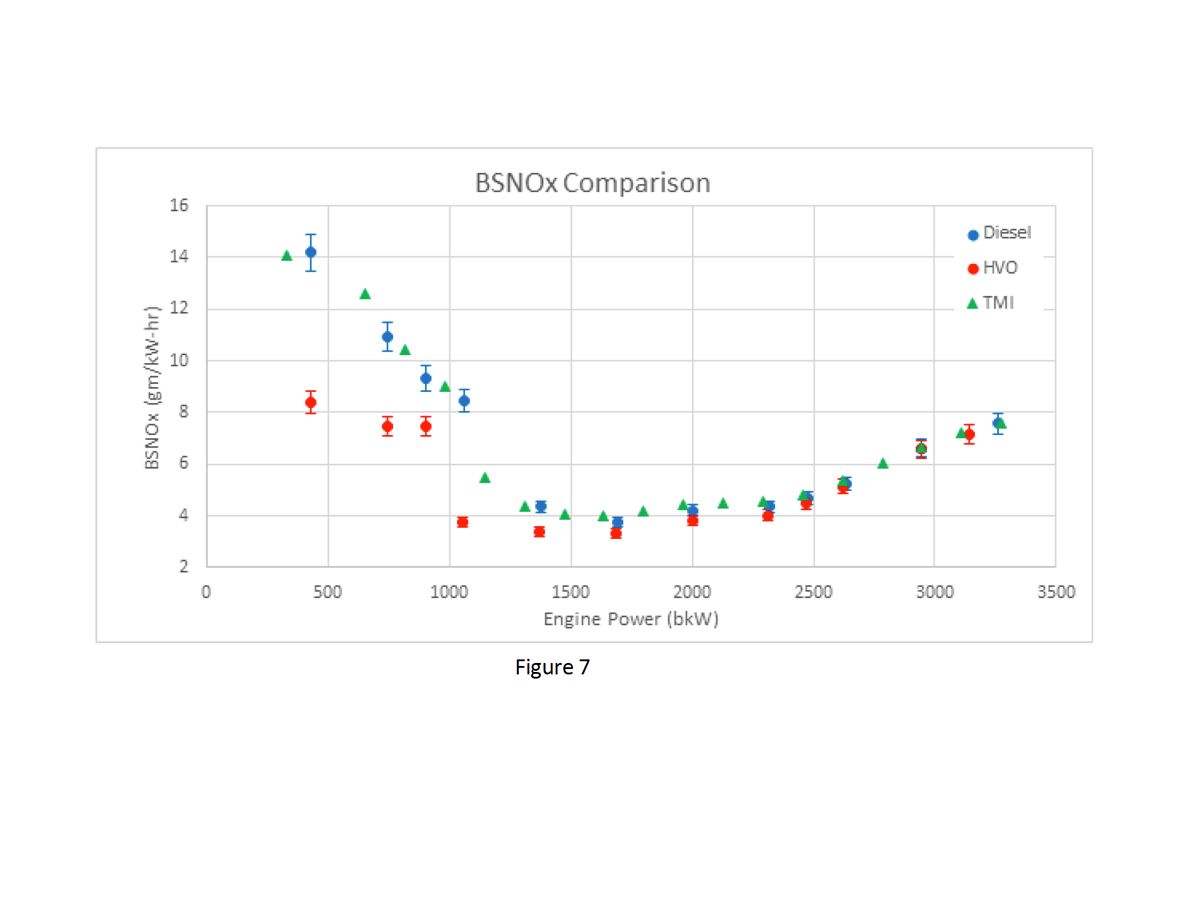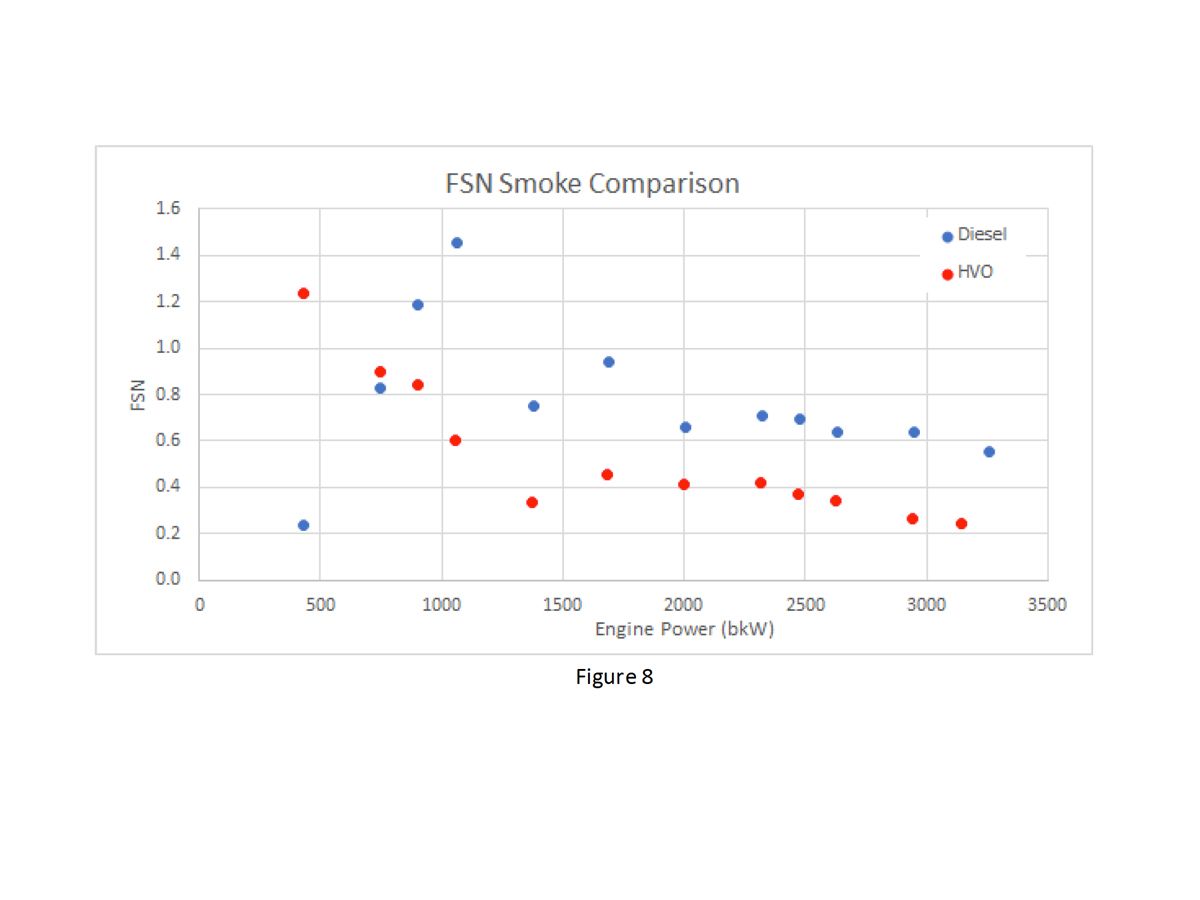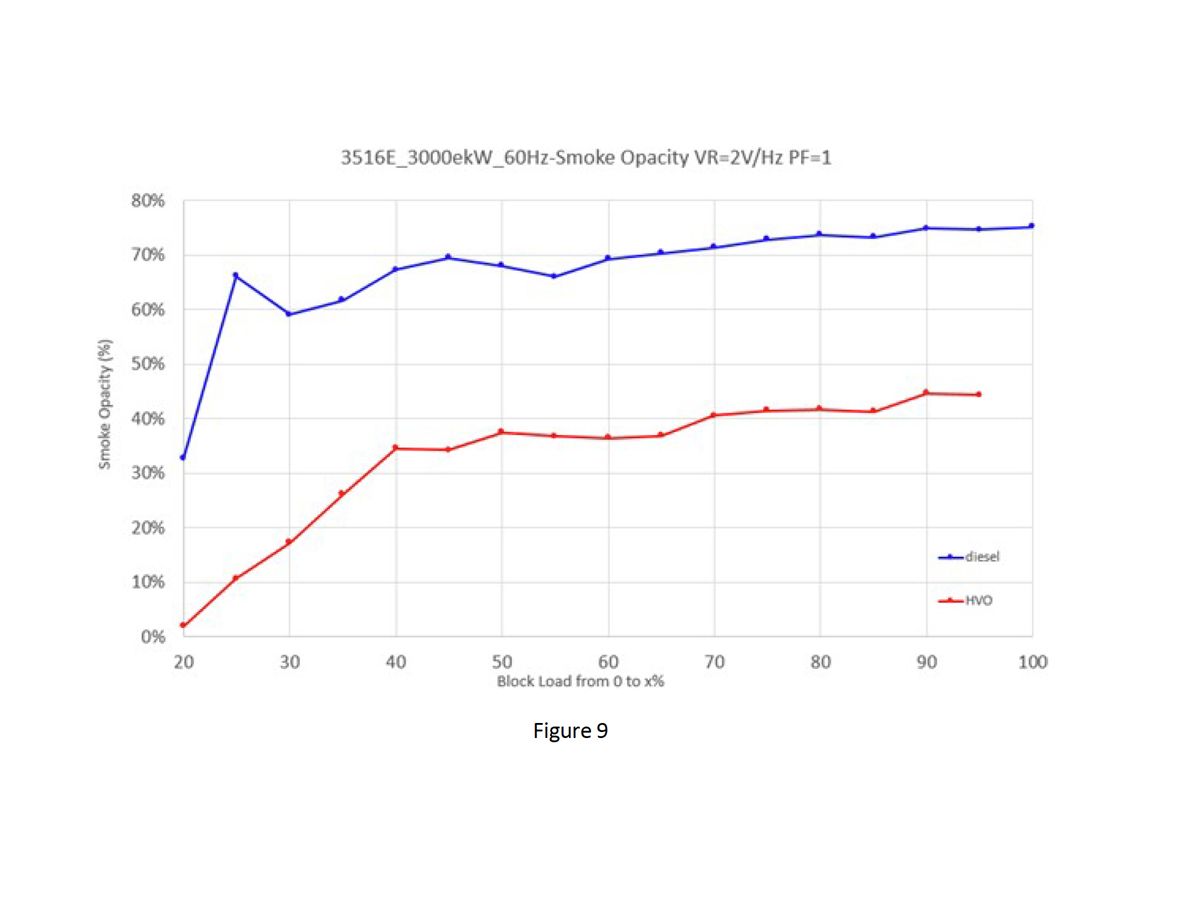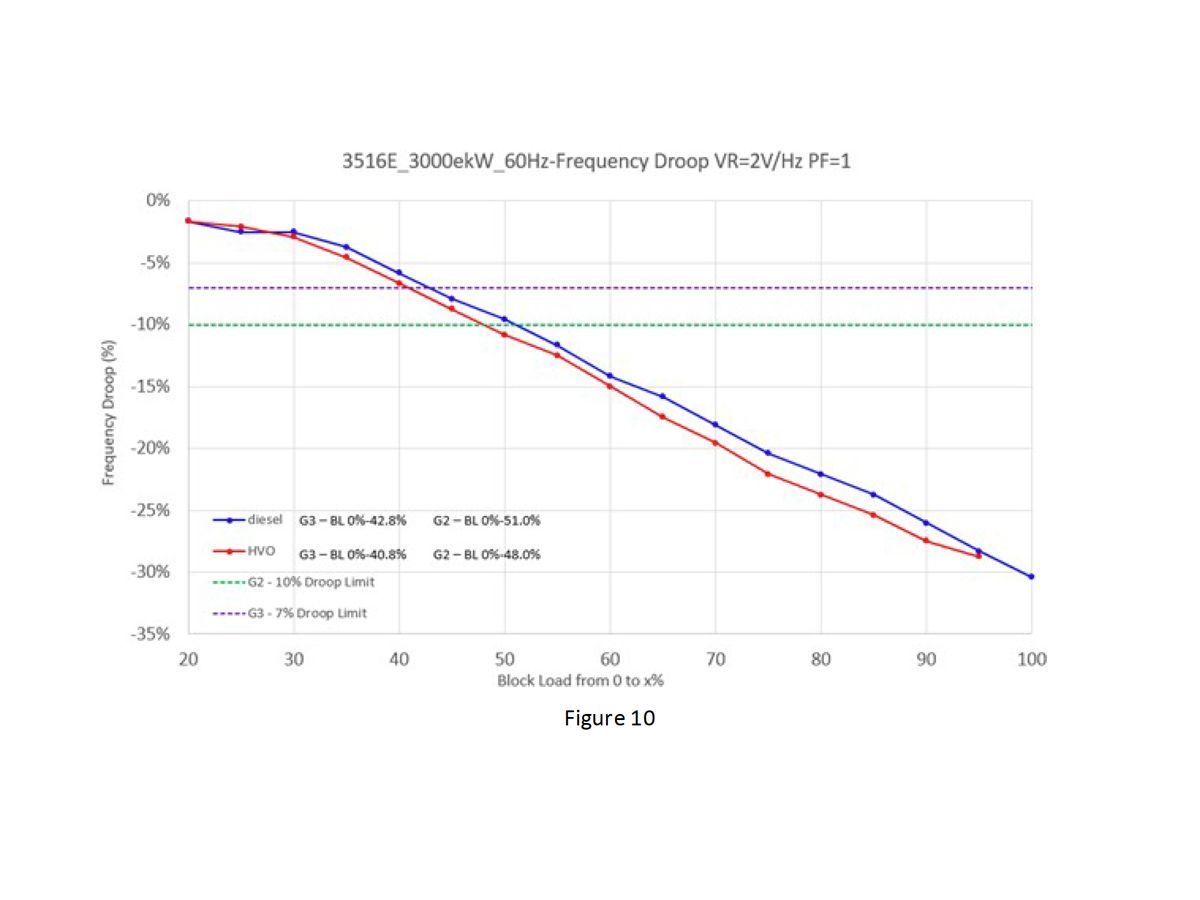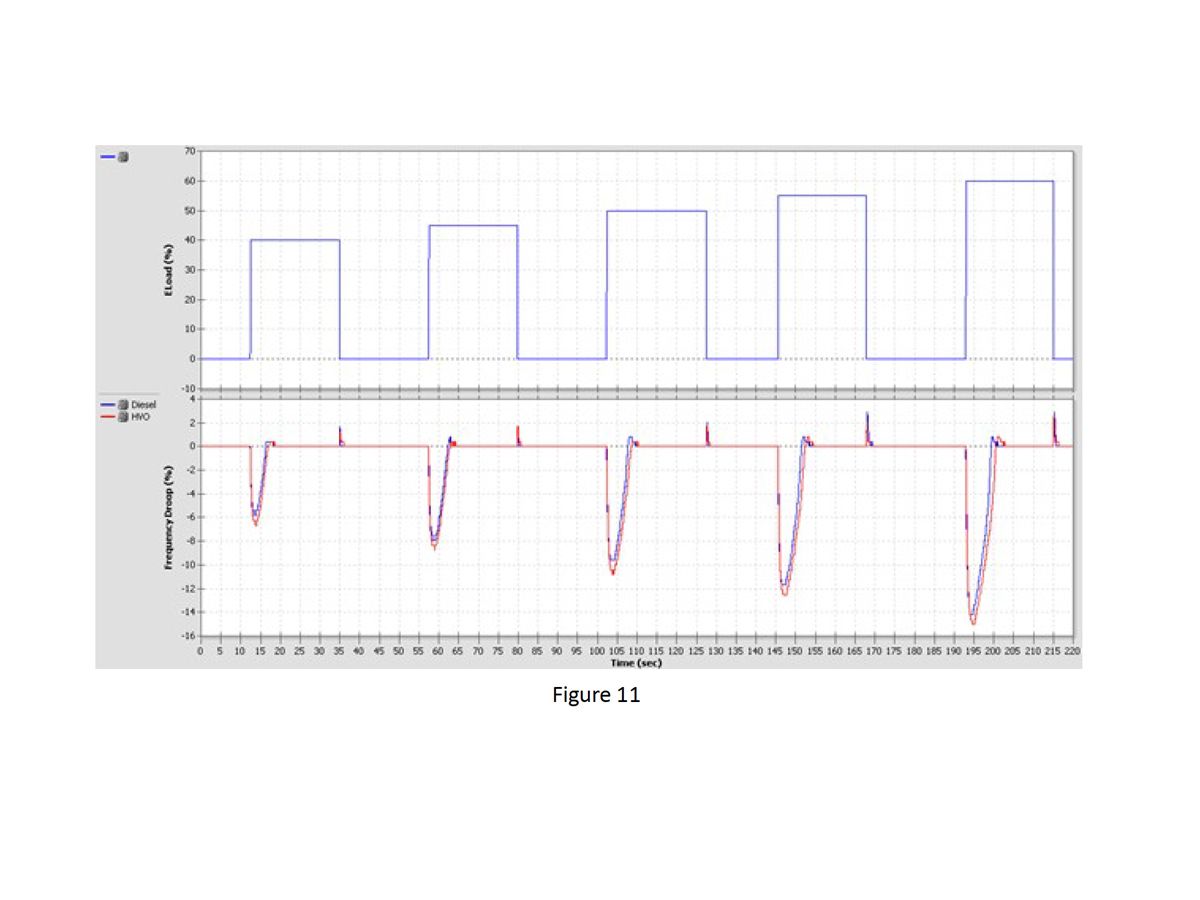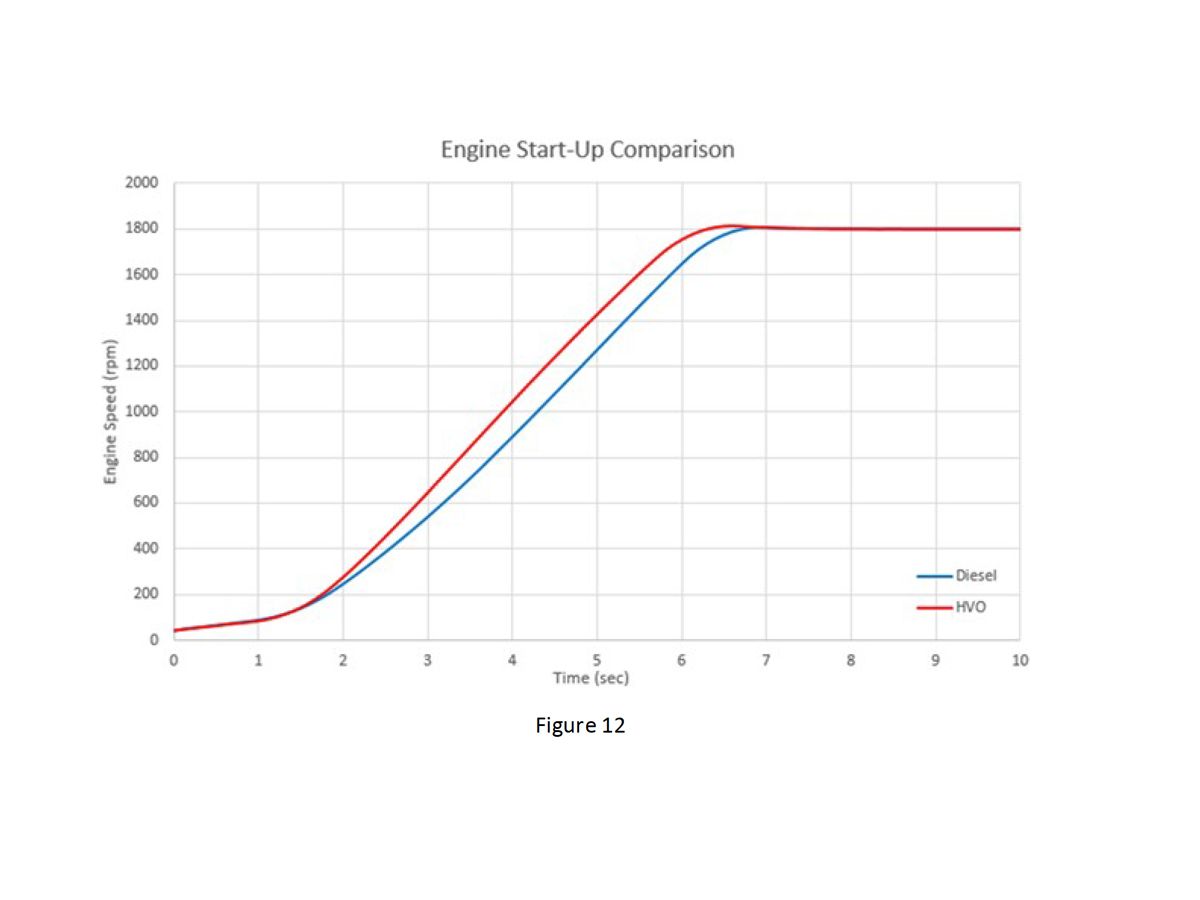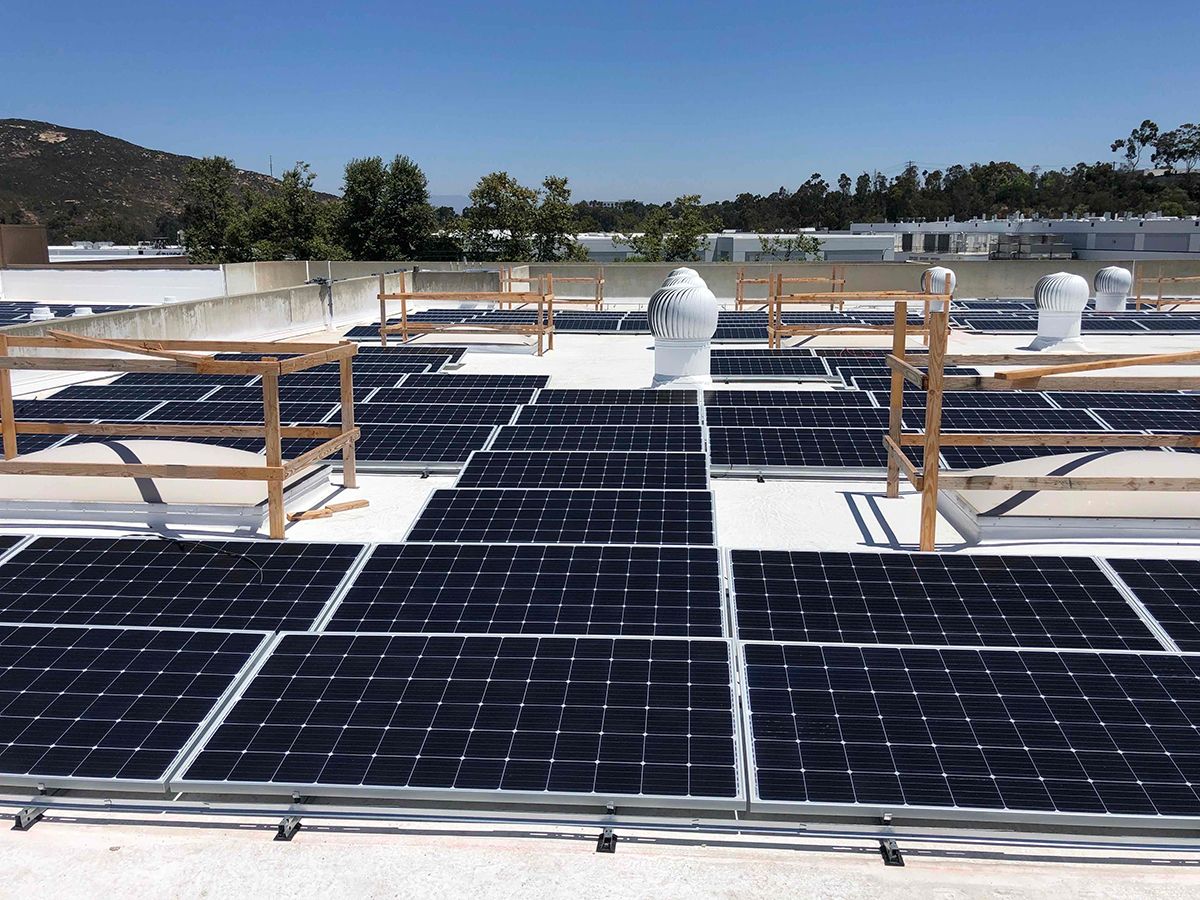

Sign In
Welcome! Sign In to personalize your Cat.com experience
If you already have an existing account with another Cat App, you can use the same account to sign in here
Register Now
One Account. All of Cat.
Your Caterpillar account is the single account you use to log in to select services and applications we offer. Shop for parts and machines online, manage your fleet, go mobile, and more.
Account Information
Site Settings
Security
3,000 ekW, 60 Hz Generator Set: Diesel & HVO Test
Executive Summary
This paper describes back-to-back tests performed at Caterpillar's Large Engine Center on a Cat® 3516E, 3,000 ekW, 60 Hz diesel generator set running on diesel and hydrotreated vegetable oil (HVO). The findings of the tests, which are detailed in this paper, can be summarized as follows:
Positive Impact Using HVO
- Compared with diesel, lower NOx, smoke, and soot emissions were recorded.
- Start-up time was faster than diesel, but the time to reach steady state speed was almost equal.
- HVO density limited the injector delivery; at the full rack setting the engine lost 3.6% of power.
- On average, transient response tests showed a 1.3% greater frequency drop.
Introduction
Caterpillar is a world leader in the development and production of heavy-duty diesel engines.
Caterpillar has been following the development of renewable and alternative fuels for decades, and the company is involved in the development of appropriate specifications to ensure the successful application of these fuels in Cat® engines. The most common liquid renewable fuels are derived from renewable resources such as planted crops (soy, palm, rapeseed, etc.), used cooking oil, animal fat, biomass, algae, and others. Renewable fuels reduce the carbon footprint of the fuels on a Life Cycle Analysis basis. One form of renewable fuel, hydrotreated vegetable oil (HVO) — also called renewable diesel (RD) — is derived from fats and oils through a hydrotreating process.
To better understand the performance and environmental impact of using HVO as fuel in a diesel engine, Caterpillar performed a back-to-back study of diesel and HVO fuel in a Cat 3516E, 3,000 ekW, 60Hz generator set.
Fuels Tested
For the test, a comparison of engine performance was conducted using diesel fuel and HVO, referred to as neat or R100, no blending.
Details on the composition of the diesel fuel and HVO used in the test are shown in Figure 1.












Test Set Up
The generator set was evaluated in test cell #525 at the Caterpillar Large Engine Center in Lafayette, Indiana. The test cell is normally used for production testing of generator sets and is equipped with a reactive load bank.
Pictures of the generator set installed in the test cell are shown in Figure 2.
The diesel fuel used for the test came from a common tank that supplies the facility test cells, while a temporary tank for the HVO was installed in an adjacent test cell.
A picture of the temporary tank for the HVO is shown in Figure 3.
Test Procedure
The testing was completed in four days with a total of 18 hours of run time on the generator set. The test plan was as follows:
- Install the generator set and perform any test cell debug with diesel fuel.
- Perform and record 12 steady-state performance points with diesel fuel.
- Perform and record three NFPA start-up tests with diesel fuel.
- Perform and record four ISO 8528-5 tests with diesel fuel.
- Perform and record four SpecSizer tests with diesel fuel.
- Change fuel filters for the engine and test cell.
- Purge the system of diesel fuel by running engine with 100 gallons of HVO.
- Perform and record 12 steady-state performance points with HVO.
- Perform and record three NFPA start-up tests with HVO.
- Perform and record four ISO 8528-5 tests with HVO.
- Perform and record four SpecSizer tests with HVO.
- Change fuel filters for the engine and test cell.
- Purge the system of HVO by running engine with 100 gallons of diesel fuel.
- Check the generator set power with diesel fuel, inspect the generator set, and remove to prepare for shipping.
For the start-up tests, the jacket water was forced to 60°C. These tests were repeated three times to ensure consistent results. Each transient test (ISO 8528-5 and SpecSizer tests) was run at two voltage regulator settings (2 V/Hz and 3 V/Hz) as well as two power factor settings (0.8 and 1).
Test Results
The generator set was expected to lose 2% to 5% of power based on the literature as well as Caterpillar’s own simulations. At all the tested part- load points, the engine was run to the same power. The engine governor modified the fuel injector duration (rack) for these points. To document the power loss at the full load point, the rack was held constant at the rated power for both the diesel and HVO tests. The test showed the engine lost 3.6% of its power with HVO, as shown in Figure 5.
The fuel consumed in gallons/hr was also recorded for these 12 steady-state points, as shown in Figure 6.
Since this test was not performed in a development/certification test cell, automotive NOx sensors and smoke sensors were installed and recorded to document changes with the different fuels.
For the NOx sensors, a 5% error bar has been added to all measured test points and shows there is no significant difference at high loads. At a 50% load and lower, the HVO shows a NOx reduction of up to approximately 40%. The NOx test results for 12 steady-state points are shown in Figure 7.
An AVL 415 smoke meter was used to measure the filter smoke number (FSN) for the 12 steady-state points. The FSN values for HVO were up to approximately 60% lower than the diesel values down to approximately 28% load. The FSN values for diesel were lower than the HVO values by up to approximately 80% at approximately 23% load and below. These results are shown in Figure 8.
The peak smoke opacity was captured for the SpecSizer test also. These results correspond with the steady- state results, showing the smoke produced with HVO is approximately 50% of the diesel value. This is shown in Figure 9.
Transient response tests with a 2:1 slope voltage regulator and at a 1.0 PF resulted in the frequency drop crossing the G3 limit at approximately 41% with HVO and 43% with diesel. The G2 limit was crossed at approximately 48% with HVO and 51% with diesel. These test results are shown in Figure 10.
Figure 11 shows how the frequency behaves with diesel and HVO fuel for block loads of 0-40% to 0-60%, in 5% increments. In all cases, the frequency dip and recovery time with diesel are less than with HVO. The frequency rise is slightly higher with diesel than HVO for the load rejection of block loads in 5% increments from 40% to 60%, except in the case of the 45% load rejection.
To test the capability of the Cat 3516E to meet NFPA 110, Type 10 requirements that stipulate power must be provided to the load terminals of the transfer switch within 10 seconds, the jacket water temperature of the engine was maintained at 60°C and a start-up test was performed with each fuel three times. Results for each of the three runs were similar, so the third run with each fuel is shown in Figure 12. As expected, based on the higher cetane number, the start-up time with HVO was slightly faster than with diesel. There was a slight overshoot in engine speed with HVO, resulting in almost identical times to reach steady state speed. In both cases, the steady state engine speed reached 1800 rpm (60 Hz) in under 7 seconds.
Summary
With some trade-offs, the tests demonstrated the viability of HVO as an alternative to diesel fuel:
- HVO density limited the injector delivery, and the engine had a 3.6% power loss at full load (a power loss of 2% to 5% was expected).
- Fuel consumption was slightly higher using HVO at all points measured.
- Overall, lower NOx, smoke and soot emissions were recorded when using HVO. For the smoke opacity test, the results using HVO were approximately 50% of diesel at all points measured.
- On average, transient response tests showed a 1.3% greater frequency drop with HVO.
- Start-up time using HVO was faster than diesel, but the time to reach steady state speed was almost equal.
